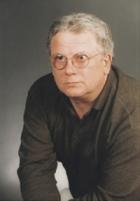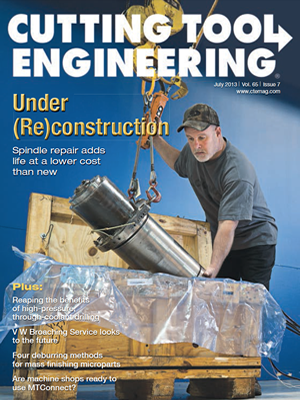Recently, a search for two new vertical machining centers resulted in my shop acquiring a lower-cost alternative horizontal.
Before the purchase, our machines had an average age of 18 years and were all from the same builder. They included horizontal machining centers with 400mm and 500mm pallets, turning centers and low-horsepower, general-purpose VMCs.
One of our oldest HMCs had seen its better days, even though it still held size. It had an eight-pallet pool, meaning eight pallets could shuttle in and out of the HMC to enable continuous production. Unfortunately, the pallet pool was never utilized to its full capabilities and became more of a fixture storage center than a productivity booster.
One day, the directive came from upper management to increase throughput—period. Based on our calculations, we could have two rotary-pallet VMCs run by one operator and replace the old horizontal. This would reduce cycle times by 50 percent to less than 5 minutes per part. Two verticals would have a faster throughput simply by the virtue that one machine would be running operation No. 1 while the other would be running operation No. 2. As a bonus, they would have a smaller combined footprint than the HMC, which is also what management wanted. My task was to find the right VMCs.
I was relatively new on the job and didn’t know anyone, so I contacted 14 dealers covering the gamut of machines I thought could handle our parts production. A couple of dealers that represented European builders were immediately ruled out—not because of the product, but because of the high cost vs. our production requirements. If we were running thousands of parts per week, the high-end European machines definitely would be my taste. But, I don’t want to take anything away from the Pacific Rim manufacturers, which also offer some fine products.
My one stipulation for the dealers was they must have installations in automotive or other high-production facilities. If it’s good enough for automotive, it’s good enough for me. That is, less legwork for me.
When I showed the dealers our current machining methodology, some of them insisted on quoting HMCs. I agreed the parts were perfect for a horizontal because that’s how we are machining them! That group included our incumbent machine tool dealer, who just assumed we would buy from him. He couldn’t understand that we wanted a couple of verticals to increase throughput. He took forever to present a budgetary quote, let alone a time study. Unfortunately for those dealers pitching an HMC, they did not make the final cut.
I narrowed the field to three dealers who represented Japanese VMCs and seemed to be in my budgeted price range. At the last minute, however, one of them quoted a single horizontal. As it turned out, he correctly thought he might be priced out of contention by the costs of his VMCs. But he took it upon himself to conduct a time study for the HMC, which he guaranteed, and price the machine with the required options. The cycle time was slightly longer than what we wanted, but we saved more than $120,000 by not having to have new fixtures made and wait 12 weeks for them and by not needing to purchase different toolholders. The decision was a no-brainer for management because price for them outweighs maximizing time savings and minimizing the equipment’s footprint.
Had the other dealers taken the initiative and approached the process how the winning dealer did—proving an HMC was the way to go—they might have made the sale instead. Now, this new dealer has the leg up on the others. CTE
 About the Author: Mike Deren is a manufacturing engineer/project manager and a regular CTE contributor. He can be e-mailed at [email protected].
About the Author: Mike Deren is a manufacturing engineer/project manager and a regular CTE contributor. He can be e-mailed at [email protected].Related Glossary Terms
- centers
centers
Cone-shaped pins that support a workpiece by one or two ends during machining. The centers fit into holes drilled in the workpiece ends. Centers that turn with the workpiece are called “live” centers; those that do not are called “dead” centers.
- fixture
fixture
Device, often made in-house, that holds a specific workpiece. See jig; modular fixturing.
- reaction injection molding ( RIM)
reaction injection molding ( RIM)
Molding process that allows the rapid molding of liquid materials. The injection-molding process consists of heating and homogenizing plastic granules in a cylinder until they are sufficiently fluid to allow for pressure injection into a relatively cold mold, where they solidify and take the shape of the mold cavity. For thermoplastics, no chemical changes occur within the plastic, and, consequently, the process is repeatable. The major advantages of the injection-molding process are the speed of production; minimal requirements for postmolding operations; and simultaneous, multipart molding.
- turning
turning
Workpiece is held in a chuck, mounted on a face plate or secured between centers and rotated while a cutting tool, normally a single-point tool, is fed into it along its periphery or across its end or face. Takes the form of straight turning (cutting along the periphery of the workpiece); taper turning (creating a taper); step turning (turning different-size diameters on the same work); chamfering (beveling an edge or shoulder); facing (cutting on an end); turning threads (usually external but can be internal); roughing (high-volume metal removal); and finishing (final light cuts). Performed on lathes, turning centers, chucking machines, automatic screw machines and similar machines.


